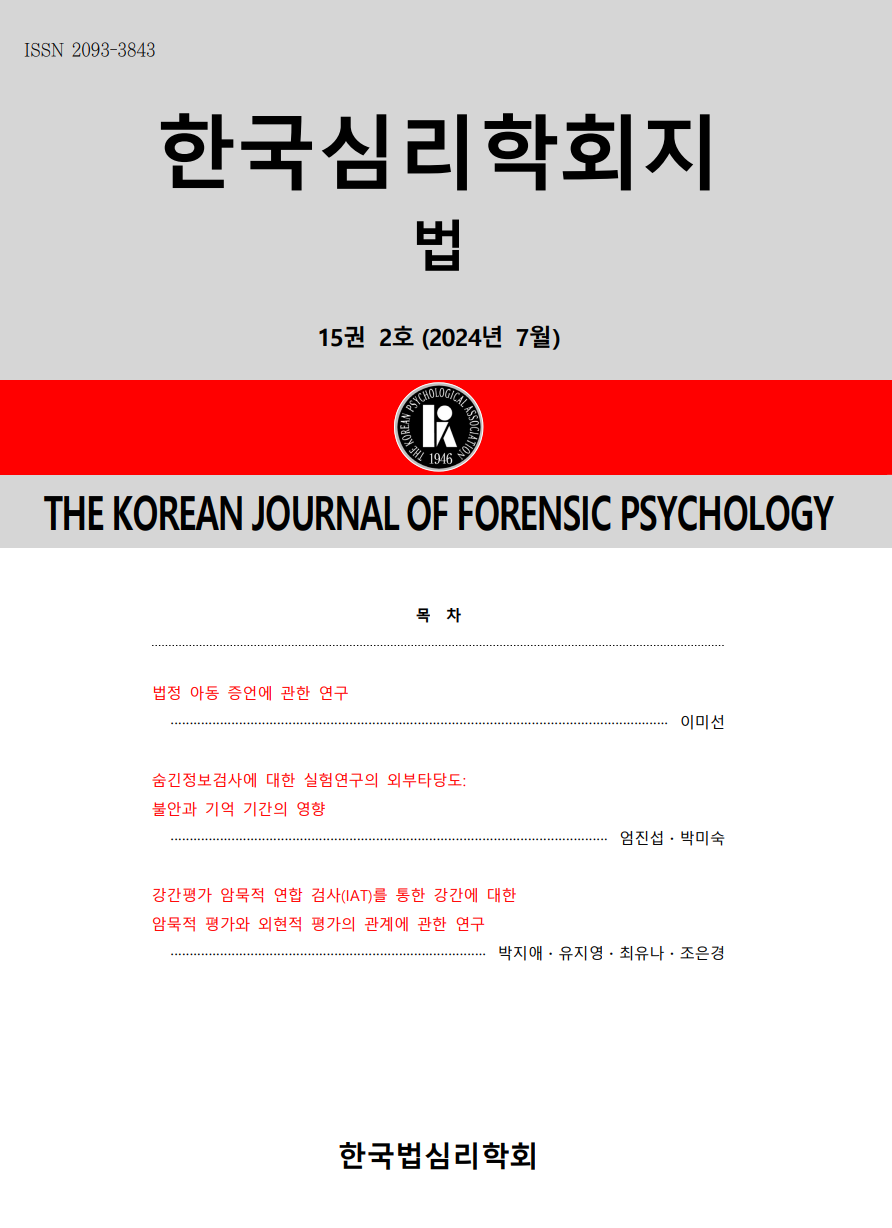open access
메뉴
open access
메뉴 ISSN : 2093-3843
ISSN : 2093-3843
In this study, 604 inmates in correctional facilities were classified into four types of crime in order to identify the characteristics of their crime patterns, and the character-assessment questionnaire (PAI-PS) they conducted was analyzed through ANOVA One-Way Analysis and Cluster Analysis to examine their psychological and emotional characteristics. Significant differences were found between the types of crime in the SOM, SOM-H, MAN, MAN-A, BOR, BOR-S, ANT, ANT-A, and ALC scales on clinical scales, and AGG and AGG-A on treatment and interpersonal scales. AGG-P, NON, and DOM scales showed differences between crime types. The results of a cluster analysis to find out how inmates are distinguished according to scores on the PAI-PS scale and the sub-scale showed that Cluster 1 was divided into ‘Sentence and Accident Instability Group’, Cluster 2 was ‘Dpression and Stress-Host Group’ and Cluster 3 was ‘Groups that do not complain of psychological and emotional problems’. This study is meaningful in that it provides information for individual understanding of water types in calibration facilities by identifying PAI-PS profile characteristics according to crime types and analyzing clusters according to scores of PAI-PS scales and sub-scale, which could provide basic data for each type of treatment program suitable for each type of water type in the calibration system.
Pieces of evidence that implicate the motive of the defendant for committing the alleged crime do not in itself prove the guilt of the defendant. Davis & Follette (2002) raised a concern that judges and juries would rely on the representativeness heuristic to evaluate the motive evidence and thus, overestimate its probative value which could lead to an erroneous conviction. The present study was to see whether the probative value of a motive evidence is indeed overestimated and to acquire an understanding of the way in which the probative value of a motive evidence is subjectively evaluated. One hundred thirty-one participants in their 20s read a trial scenario of a murder case in which the defendant was charged for a uxoricide. The participants rated the probability of guilt, rendered the verdict, and evaluated the probative value of the motive evidence (infidelity of the defendant) presented by the prosecutor. The trial scenario was manipulated into three levels of the strength of evidence (weak, medium, high), and each level was divided into two conditions, one with the motive evidence and the other without the motive evidence. The participants in the condition with the motive evidence did not render more verdicts of guilty nor rated the probability of guilt higher than the participants in the condition without the motive evidence. On the other hand, the participants' evaluation of the probative value of the motive evidence showed a pattern predicted by the Coherence-Based Reasoning Model (Simon, 2004; Soriano, 2003). Specifically, the strength of evidence affected the participant's conviction about the defendant's guilt and the conviction, in turn, affected the evaluation of the probative value of the motive evidence. Finally, we discussed the admissibility of the motive evidence.
This study examined whether controlling behavior mediates the effects of anxious attachment on intimate partner violence(IPV). It was hypothesized that anxiously attached individuals show controlling behavior, which in turn, affects the likelihood of intimate partner violence to occur. A total sample of 2,000 adults male completed self-report measures of Controlling Behavior, Experiences in Close Relationship Scale (ECR), and the Revised Conflict Tactics Scales (CTS2) as a part of a study on Violence Against Women conducted by Korean Institute of Criminology. Findings showed that anxious attachment, controlling behavior and intimate partner violence were positively correlated. Also, mediation analysis showed that effects of anxious attachment on intimate partner violence were fully mediated by controlling behavior.
The present study was conducted to investigate whether the defendant's character evidence affects fact-finding and evidence judgments. The results showed that manipulating the defendant's character evidence differently affected the initial judgment. The conditions under which the defendant's negative character evidence was presented were judged to have a higher probability of guilt against the defendant than the conditions under which the positive character evidence was presented, and the frequency of the conviction was higher. The ruling, which was formed by character evidence of the defendant also affected the prosecution and the defense's claims based on each issue. It can be seen that the judgment of the defendant induced by the character evidence of the defendant is maintained not only in the judgment of evidence but also in the final judgment. Therefore, it is necessary to come up with a legal system rule out this bias for a fair trial.